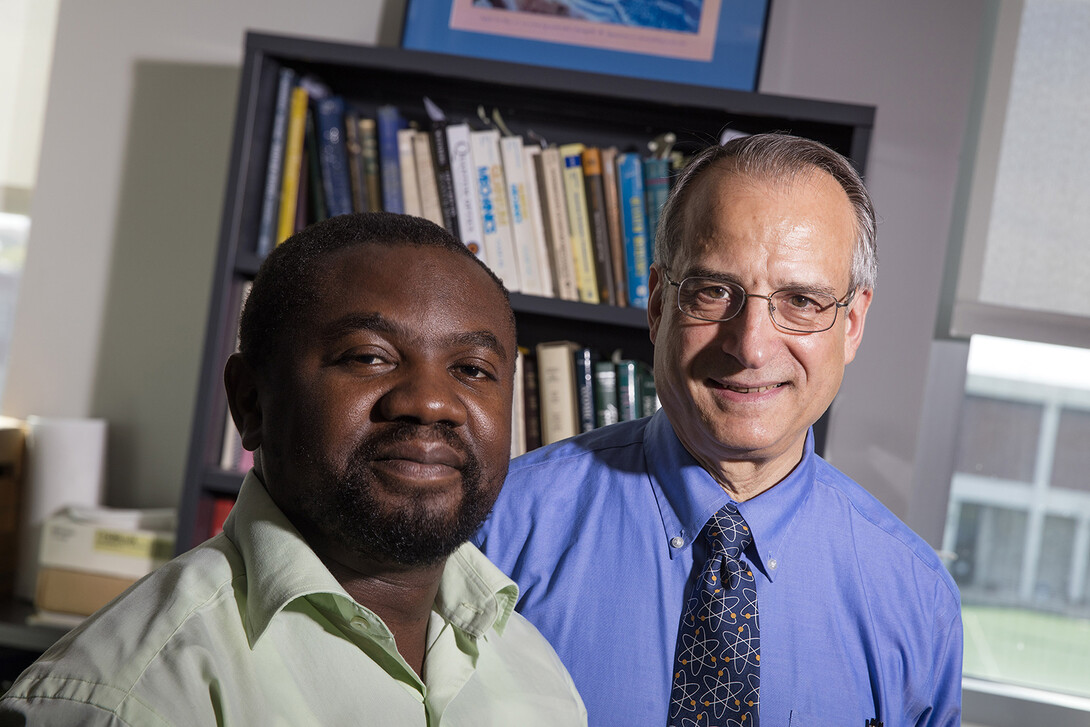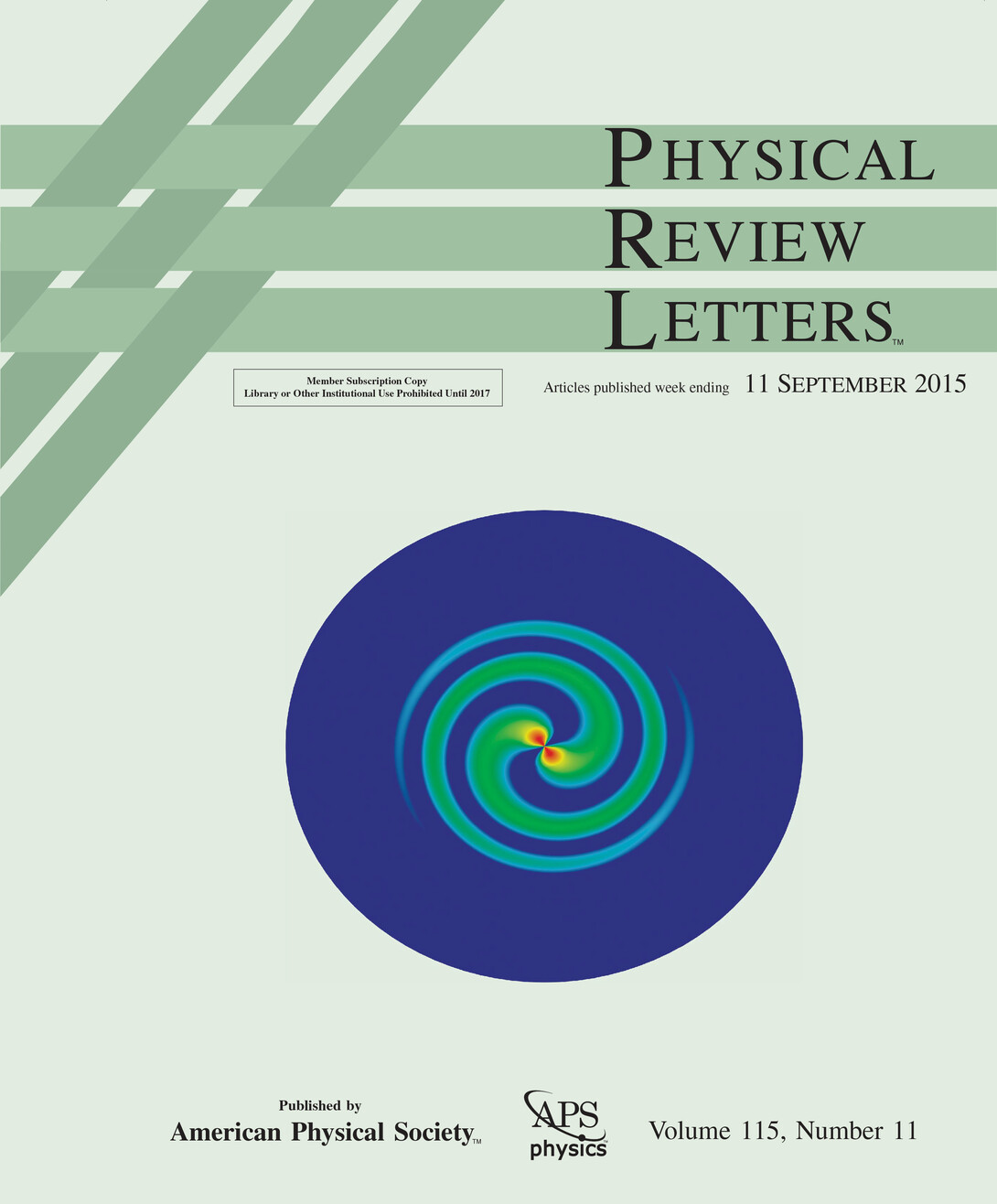
University of Nebraska-Lincoln physicists have made a compelling discovery that graces the Sept. 11 cover of the journal Physical Review Letters.
In their new study, physicists Anthony Starace and Jean Marcel Ngoko Djiokap report an unusual pattern of wave interference produced when an electron is ejected, or ionized, from its orbit around a helium atom.
Like all sub-atomic particles, electrons occupy a realm governed by quantum mechanics. This means that their position, velocity and other properties are probabilistic, existing within a range of possible values. Electrons can also exhibit the behavior of waves that, like ripples in a pond, often gain or lose amplitude as they cross paths.
By firing two time-delayed, ultrashort laser pulses at a helium atom, the researchers found that the distribution of momentum values for these intersecting electron waves can take the form of a two-armed vortex that resembles a spiral galaxy.
Though the spiral had been observed in waves of light, the team’s study is the first to produce the pattern with electrons. In doing so, it also dramatically demonstrates the wave-like property of matter, Starace said.
Starace called the pattern an “excellent diagnostic tool” for characterizing electron-manipulating laser pulses, which occur on such fast time scales that physicists have sought multiple ways to measure their durations and intensities. The team’s pulses lasted just 124 attoseconds, which compares to one second as one second compares to roughly 256 million years.
“You get this pattern, and you have all the time in the world to make measurements of it,” said Starace, a George Holmes University Professor of physics. “You don’t have to do this on the fly.
“Having a way to know what you’re inputting into an unknown situation is important. If you’re a doctor (examining) a patient, you have to know the properties of (your instruments) so that you can determine a patient’s health. Similarly, we physicists are developing new tools. One has to completely understand those tools before one can put them to use.”
Like all light, laser pulses feature electric fields that normally point in many directions. Polarizing a laser pulse aligns these fields along one direction, while circularly polarizing a pulse aligns and then essentially rotates the fields around an axis.
The team’s first pulse of circularly polarized light rotated in one direction, with the second rotating the opposite way. These orientations dictate whether the resulting spiral pattern appears to swirl left or right, Ngoko Djiokap said. The time delay between the pulses determines the number of arms in the spiral, he said, whereas the duration of the pulses corresponds to the width of the arms.
“If you use (longer) pulses to probe the electrons, you are going to compress the spiral pattern that you want to (analyze),” said Ngoko Djiokap, research assistant professor of physics. “Using attosecond pulses, the pattern is clearly visible.”
Offering their peers new tools, said Starace, should help inform future investigations involving ultrafast laser physics.
“Attosecond science is still a new field,” Starace said. “We’re forging ahead and predicting what kinds of experiments can be done.”
Starace and Ngoko Djiokap authored their study with researchers from the University of Rochester, Aarhus University in Denmark and Voronezh State University in Russia.
The team’s work was supported in part by the U.S. Department of Energy’s Office of Science.








